History of Rolex GMT-Master: Charting the Course of an Icon
Like so many other of Rolex's sports watches, the Rolex GMT-Master is an exceedingly popular model right now – particularly in stainless steel. Nearly all Rolex GMT-Master watches are selling for significantly more than their original retail prices on the secondary market, and certain well-preserved vintage examples have been known to break the six-figure price point at auction. Thus far, Rolex has made eight generations of the GMT-Master over almost seven decades, and two major variations in the form of the GMT 1 and the GMT 2.
So, where did it all begin? How has Rolex’s beloved pilot watch, which debuted in 1955, changed over time? Join us as we discuss the early history of the Rolex GMT-Master, outline the evolution from the GMT-Master I to the GMT-Master II, review important collection milestones, and examine the newest – and most unique – GMT reference to join the fleet. Keep reading for a succinct history of the Rolex GMT-Master.
Rolex GMT-Master
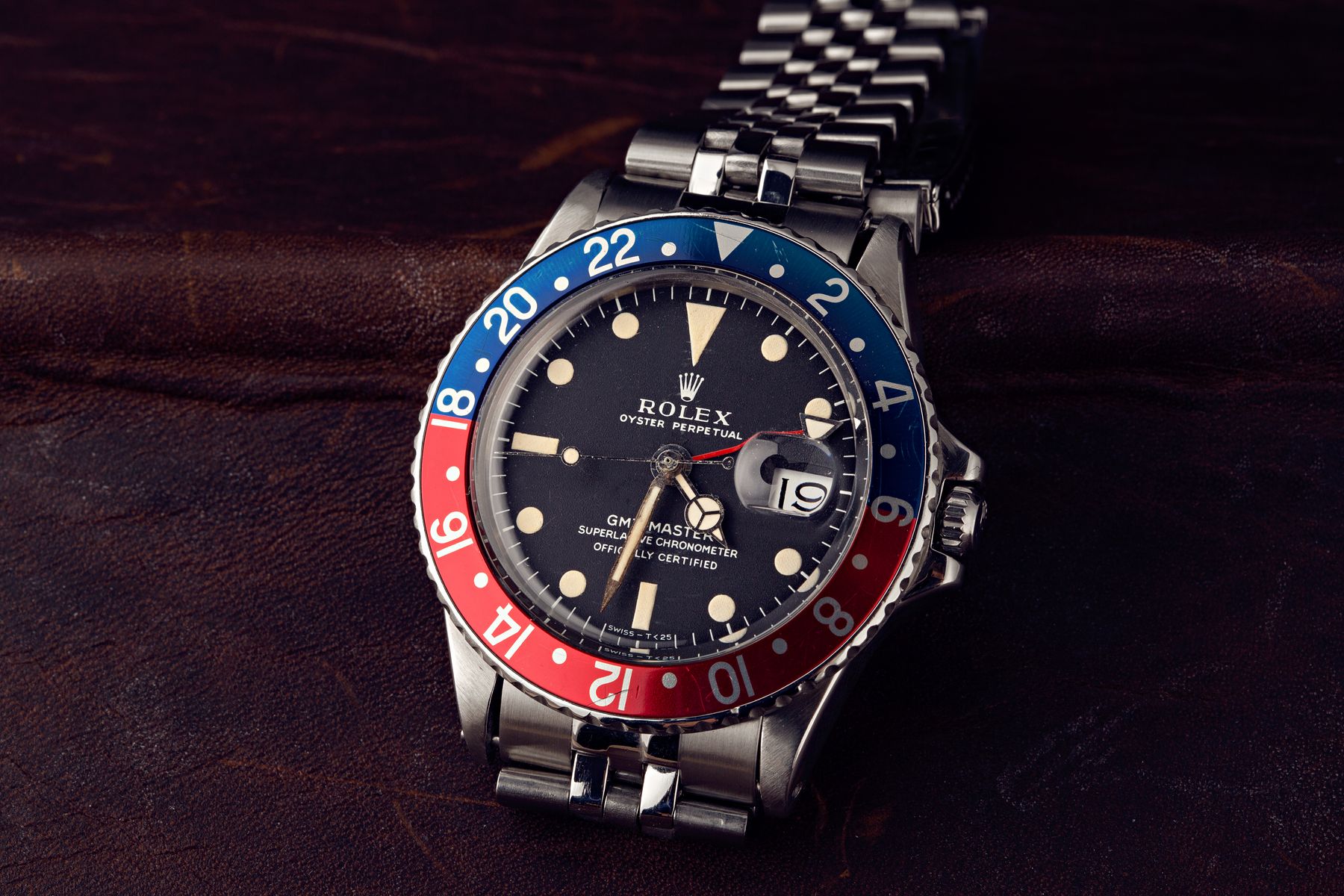
Rolex GMT-Master Quick Specs (discontinued)
- Introduction year: 1955
- References: 6542, 1675, 16750, 16700
- Case Size: First 38mm, then 40mm
- Case Materials: Stainless Steel, Yellow Gold, Two-Tone Steel and Yellow Gold
- Bezel: Bidirectional Rotating, 24-Hour Scale, First Bakelite then Aluminum
- Bezel Colors: Blue and Red “Pepsi,” Brown and Gold “Root Beer,” All-Black
- Functions: Dual Time Display, Synchronized Hour Hands, Date.
- Bracelet: Oyster or Jubilee
- Caliber: 1036, 1066, 1565, 1575, 3075, 3175 automatic movements
- Water Resistance: 50 meters or 100 meters
These specifications highlight the key features of the discontinued Rolex GMT-Master I, showcasing its evolution from 1955 through various references. With its iconic bidirectional rotating bezel, dual time display, and robust construction, the GMT-Master I laid the foundation for Rolex’s legendary pilot watch lineage. For watch enthusiasts seeking a deeper dive into the history, variations, and significance of this classic timepiece, our comprehensive Rolex GMT-Master review offers a wealth of detailed information. This in-depth guide explores the full story behind these specifications, providing context and insights into what made the GMT-Master I a true icon in the world of luxury watches.
Rolex GMT-Master II
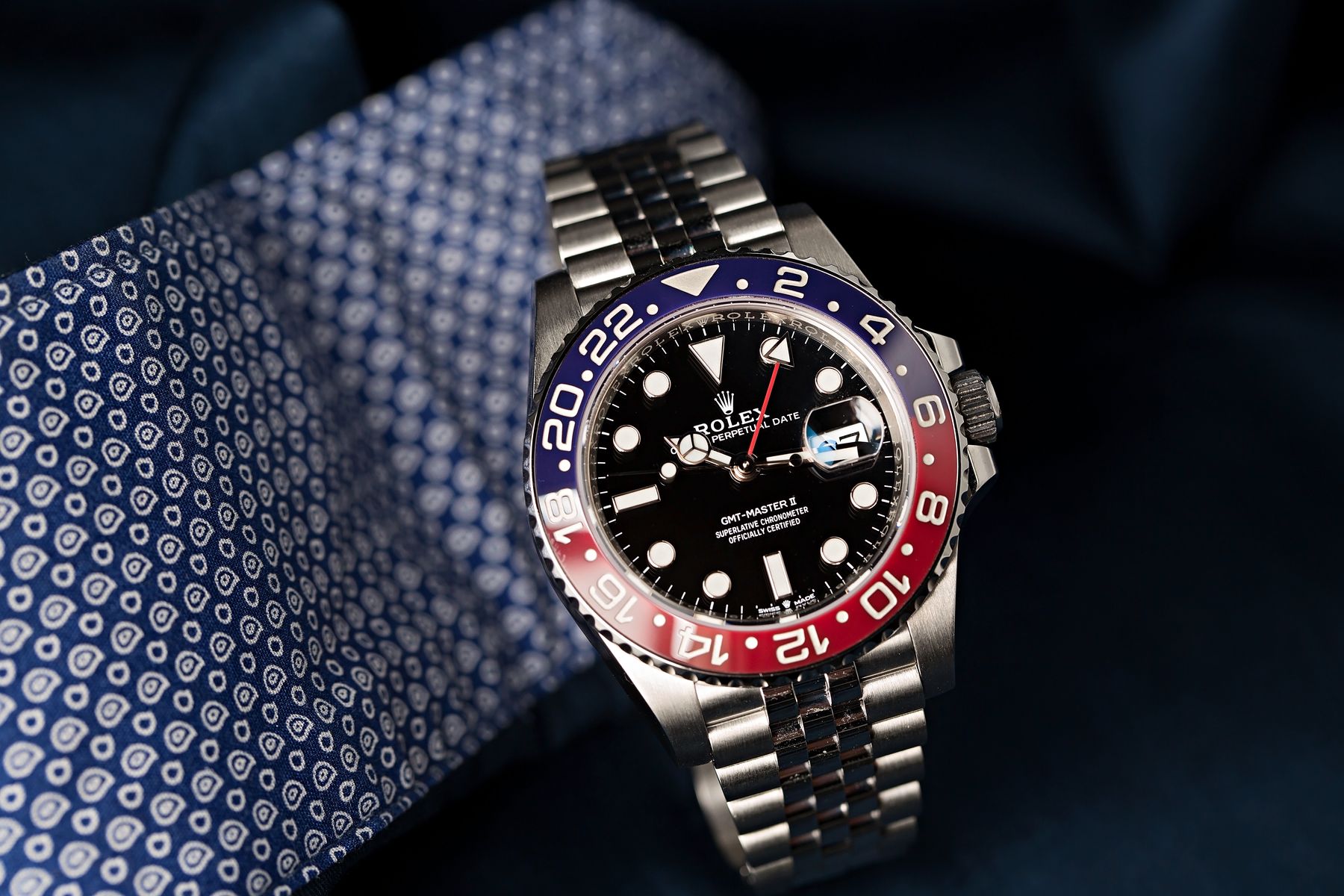
Rolex GMT-Master II Quick Specs
- Introduction year: 1982
- References: 16760, 16710, 116710, 126710, 126720
- Case Size: 40mm
- Case Materials: Stainless Steel, Yellow Gold, Two-Tone Steel and Yellow Gold, White Gold, Everose Gold, Two-Tone Steel and Everose Gold
- Bezel: Bidirectional Rotating, 24-Hour Scale, First Aluminum then Cerachrom
- Bezel Colors: Blue and Red “Pepsi,” Brown and Gold “Root Beer,” Black and Red “Coke,” Blue and Black “Batman,” Brown and Black “Root Beer,” Green and Black, All-Black
- Functions: Dual Time Display, Independent Rapid-setting 12-Hour Hand, Date.
- Bracelet: Oyster or Jubilee
- Caliber: 3085, 3185, 3186, 3285 automatic movements
- Water Resistance: 100 meters
These specifications highlight the Rolex GMT-Master II’s evolution since 1982. With its 40mm case, diverse materials, and innovative bezel designs, it builds on its predecessor’s legacy while adding enhanced functionality for travelers. From aluminum to Cerachrom bezels and new color combinations, the GMT-Master II continues to innovate. For a deeper dive into this iconic timepiece’s history and technical features, explore our comprehensive Rolex GMT-Master II review, which offers valuable insights beyond these basic specs.
Rolex GMT-Master History: The Origins
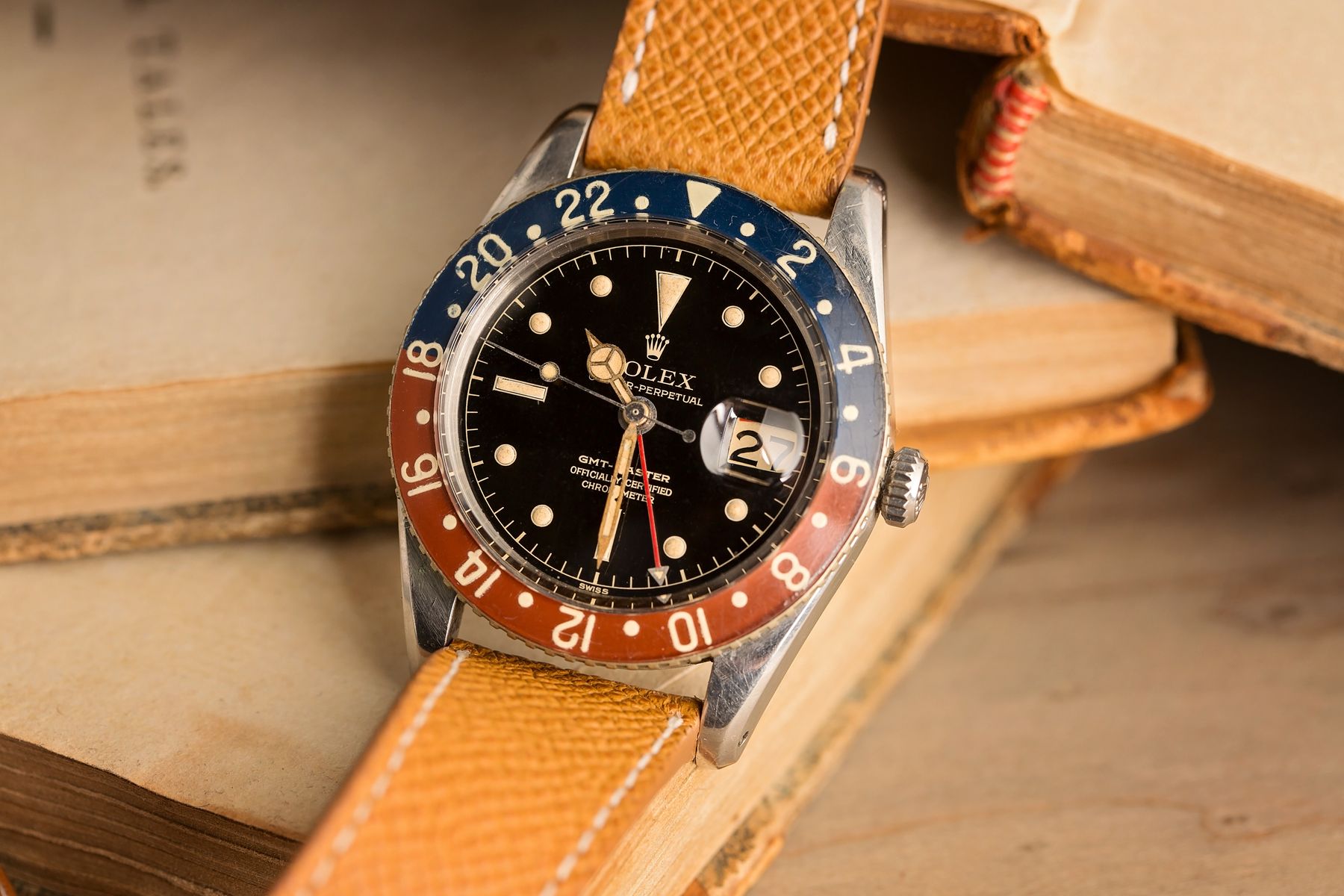
The history of the Rolex GMT-Master dates back to the mid-1950s when Pan Am airlines approached Rolex about a watch that its pilots could use on long-haul flights to simultaneously track multiple time zones. Building upon the design of the existing Turn-O-Graph ref. 6202, Rolex added a fourth hand that made one full rotation every 24 hours and fitted the rotating bezel with an insert that featured a 24-hour scale.
This first GMT-Master watch was dubbed the ref. 6542, and although its design was relatively simple, it was highly effective and allowed users to reference a secondary time zone by simply rotating the bezel and reading the corresponding time against the 24-hour hand. For pilots during that era, that second time zone would be Greenwich Meridian Time or GMT.
The split-color blue and red bezel on the steel case was intended to serve as a quick reference for daylight vs. nighttime hours – red for day and blue for night, although some believe it was a reference to colors of many attitude indicators fitted to airplanes of the era. The bezel of the inaugural GMT-Master 6542 was fashioned from Bakelite and included radium-based lume so that the embedded numerals could easily be read in the dark.
From Bakelite to Aluminum Bezels
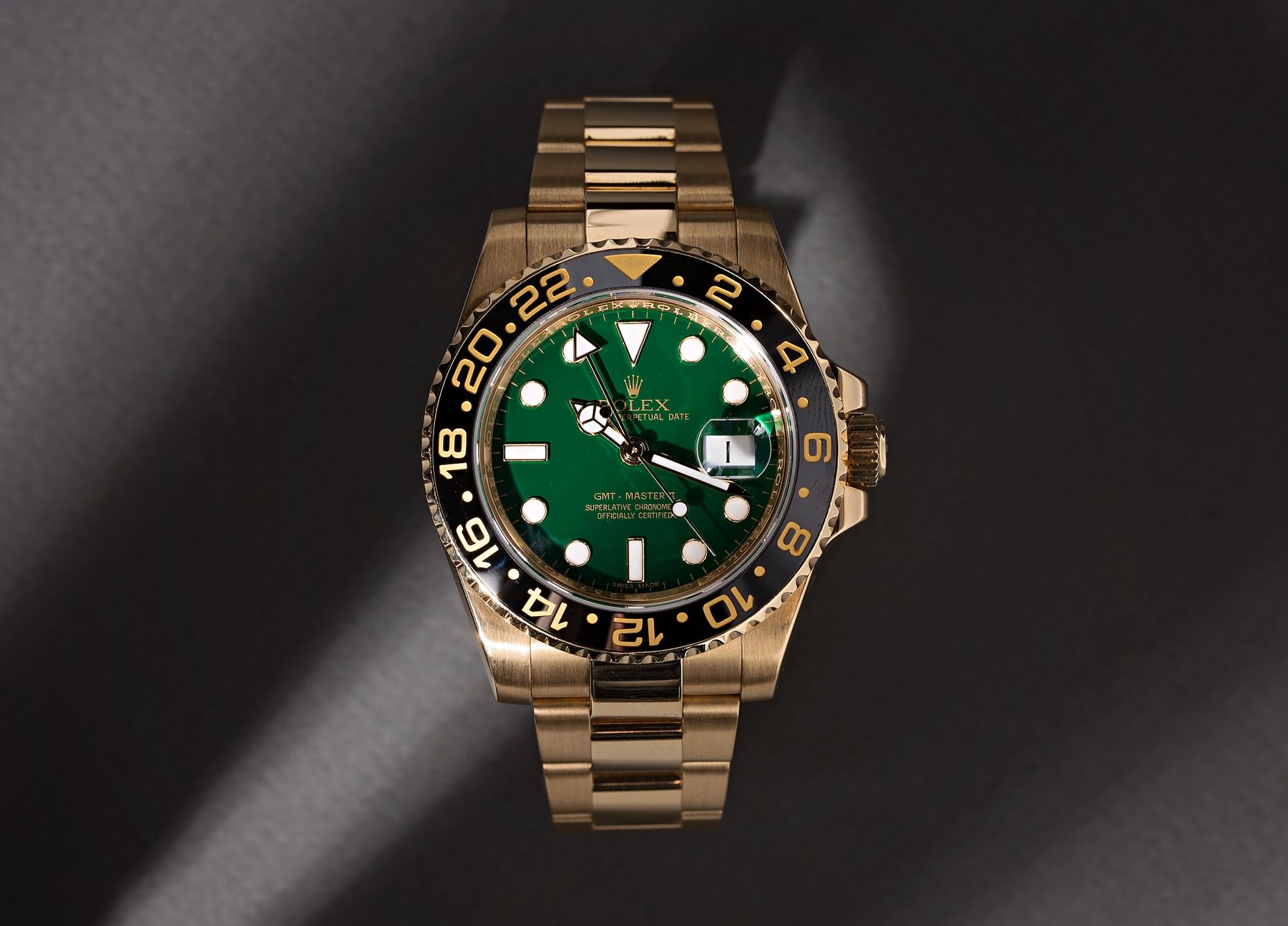
However, Bakelite proved to be too brittle and fragile for a tool watch, which caused Rolex to replace it with a sturdier aluminum bezel insert on the succeeding GMT-Master ref. 1675, which was introduced in 1959. Another major update of the second-generation GMT-Master was the inclusion of crown guards on a larger 40mm case. The Rolex 1675 was produced for over two decades, and over this long period, the reference received plenty of updates including new dials, calibers, materials, and bezel colors.
- 1955: GMT-Master 6542 (6542/8 yellow gold variant)
- 1959: GMT-Master 1675 (1675/8 yellow gold variant, 1675/3 two-tone variant)
- 1981: GMT-Master 16750 (16758 yellow gold variant, 16753 two-tone variant)
- 1988: GMT-Master 16700
Next in line was the Rolex GMT-Master 16750, released around 1981. The major update of this reference was the Caliber 3075 powering the watch, which introduced the quickset date function. Additionally, the GMT-Master ref. 16750 had double the water resistance of the succeeding 1675, rated to 100 meters deep.
Although Rolex introduced the upgraded GMT-Master II in 1982 (more on that shortly), the company released a new-gen GMT-Master ref. 16700 in 1988, complete with sapphire crystal and the new Caliber 3175 movement. The reference 16700 was positioned as a more affordable alternative to the GMT-Master II, and was exclusively available in stainless steel. After over 40 years of production, Rolex discontinued the GMT-Master to focus exclusively on making the GMT-Master II
The Arrival of The GMT-Master II
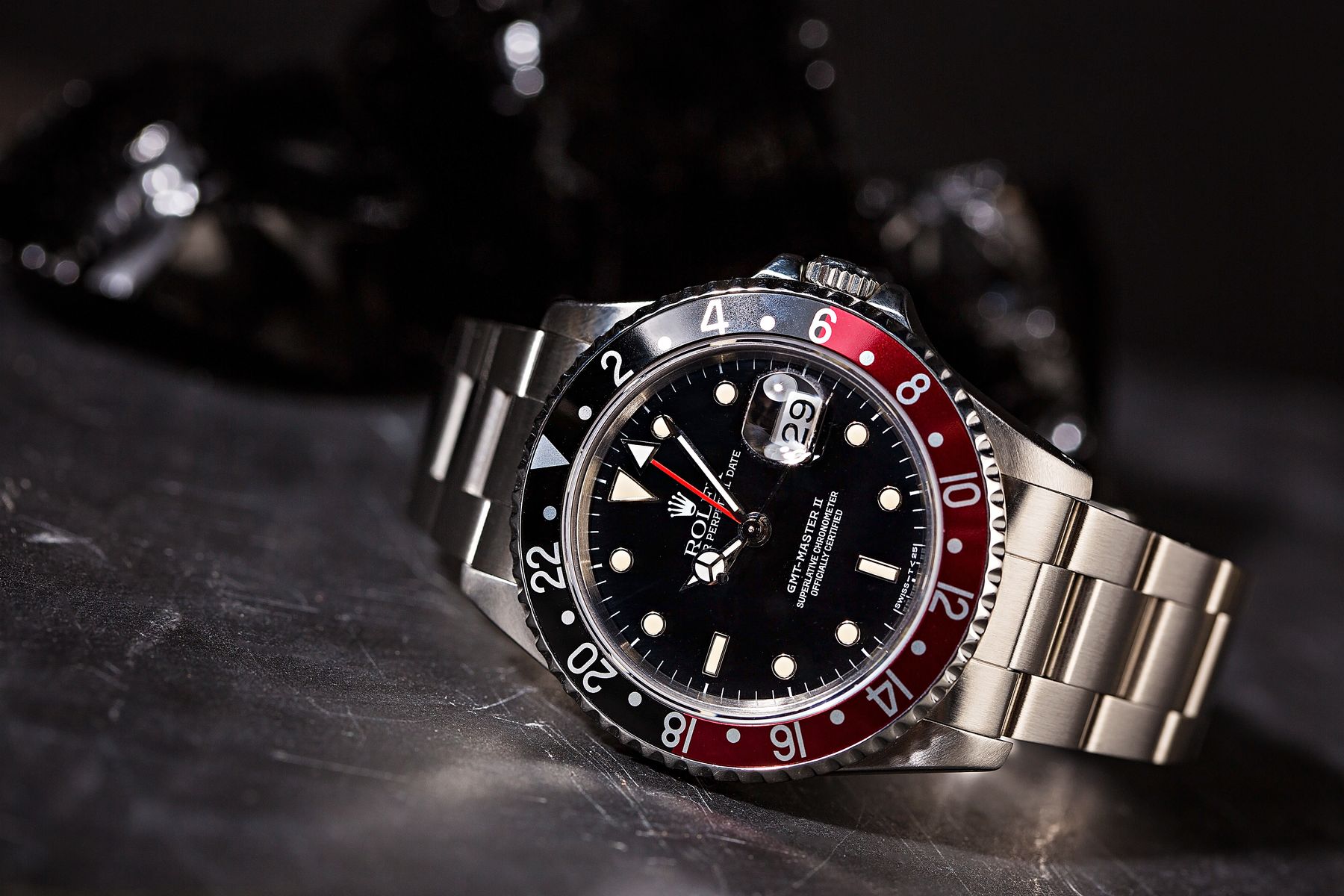
In 1982, Rolex unveiled a new chapter in its pilot’s watch story with the introduction of the GMT-Master II. While the GMT-Master II looked almost identical to the original GMT-Master, functionally, it offered a major upgrade.
Unlike the GMT-Master I, the GMT-Master II now featured de-coupled hour hands whereby the 12-hour hand could be set independently from the rest. Therefore, the wearer could move the hour hand back or forth in one-hour increments to easily change local time when necessary – a superbly practical feature for a frequent traveler. Also, since the pair of hour hands were no longer in sync, the 24-hour hand could be set to another time zone (such as reference or home) while keeping the rotating bezel in the zero position. Finally, because of this, the wearer could keep track of a third time zone with a few clicks of the rotating bezel as long as he/she knew the offset compared to the reference time.
- 1982: GMT-Master II 16760
- 1989: GMT-Master II 16710 (16718 yellow gold variant, 16713 two-tone variant)
The first GMT-Master II reference was the 16760, also known as the “Rolex Fat Lady” due to its thicker case. The GMT-Master II ref. 16760 was exclusively available in stainless steel and with a black and red bezel. A handful of years later, the second-generation GMT-Master II arrived as the ref. 16710. This particular GMT 2 series was much more varied, not only in terms of aluminum bezel colors for the steel variants (black and red, blue and red, and all-black) but also with material options such as gold and two-tone variants.
The Cerachrom Bezel Is Introduced
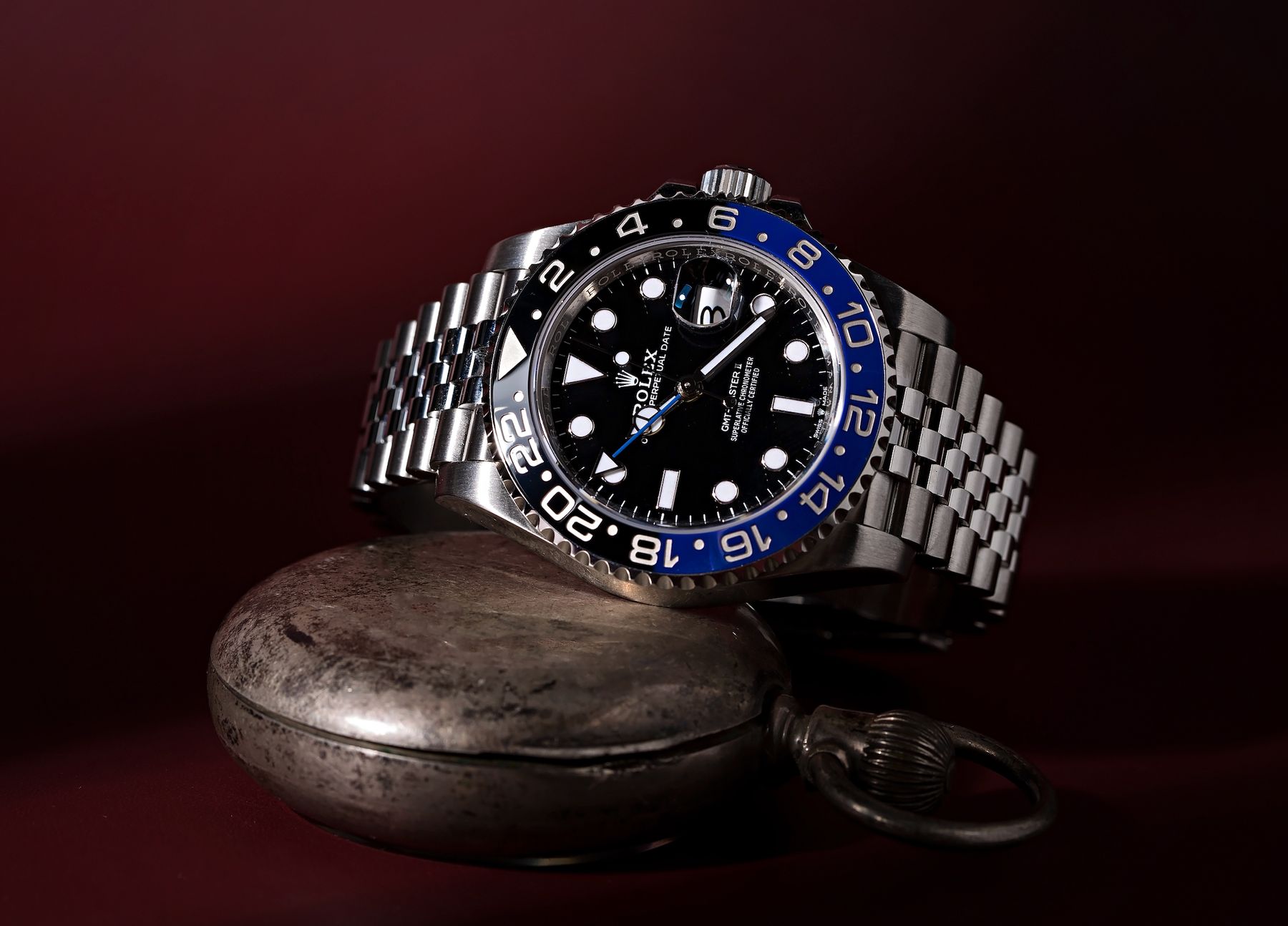
In 2005, Rolex shook things up yet again with the introduction of a brand new Cerachrom bezel – and the GMT-Master II was chosen to debut the freshly minted and proprietary ceramic alloy. The first of this generation was the GMT-Master II ref. 116718, crafted almost entirely in glorious 18k yellow gold. The next year, the two-tone GMT-Master II ref. 116713 joined the lineup followed by the steel GMT-Master II ref. 116710 the year after that.
- 2005: GMT-Master II ref. 116718
- 2006: GMT-Master II ref. 116713
- 2007: GMT-Master II ref. 116710
- 2014: GMT-Master II ref. 116719
What these three references had in common was that they were all fitted with an all-black Cerachrom ceramic bezel; the bi-colored bezel option for the GMT-Master II was gone. Rolex stated that due to the nature of its proprietary ceramic alloy, it would be impossible to make a two-toned Cerachrom bezel.
However, in 2013, Rolex did the impossible by launching the GMT-Master II 116710 with a black and blue Cerachrom bezel. The following year, yet another two-tone Cerachrom bezel joined the collection in the form of the white gold GMT-Master II ref. 116719 with a blue and red “Pepsi” bezel.
The New Generation Caliber 3285 GMT-Master
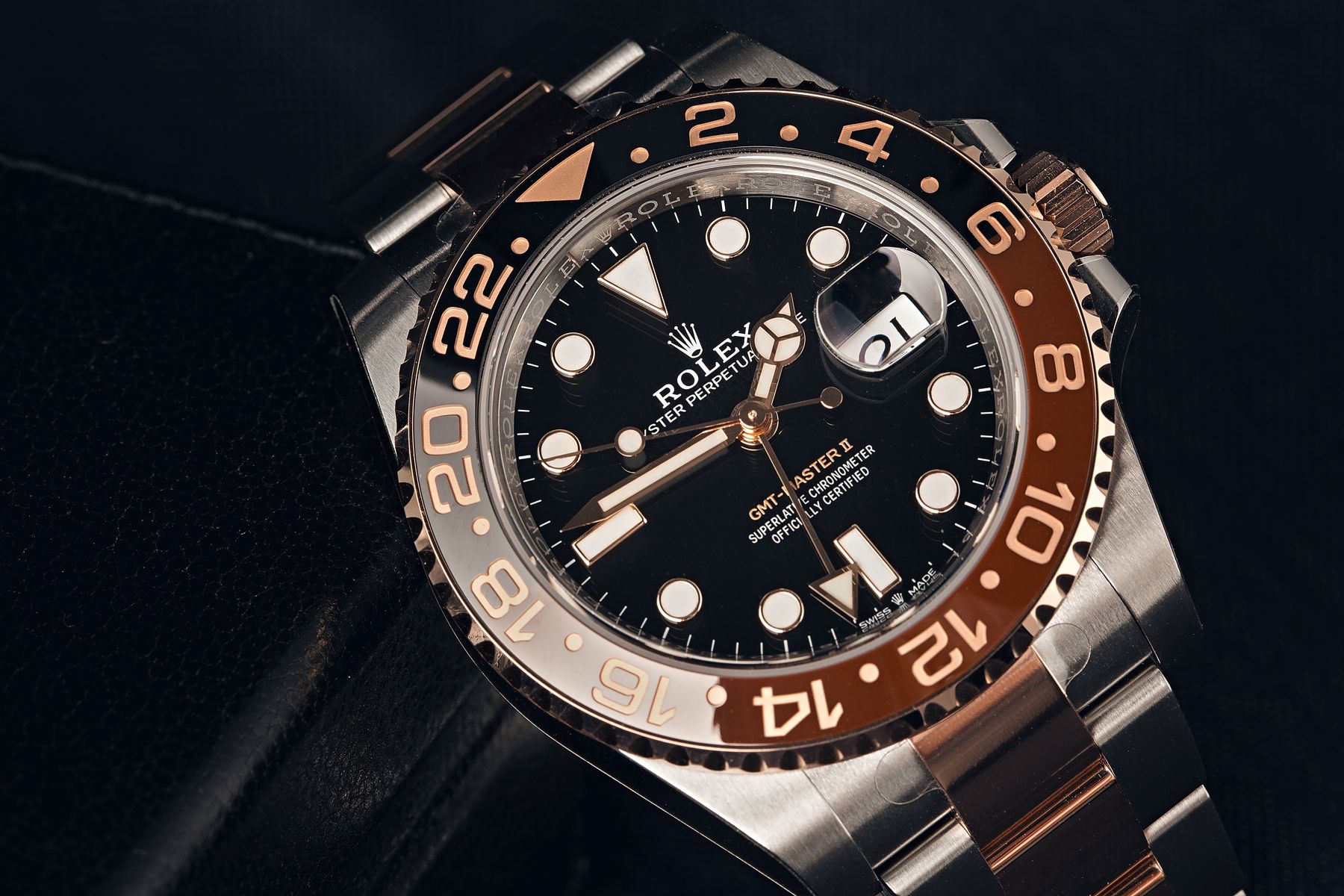
2018 was a big year for the Rolex GMT-Master II collection, brought about by the arrival of the new Caliber 3285. This new-generation GMT movement not only boosts the power reserve to 70 hours (compared to the preceding 42 hours), but it is also fitted with a slew of patents for improvements in energy efficiency, durability, and precision.
To house the new movement, Rolex rolled out these new GMT-Master II references in 2018:
- GMT-Master II 126710BLRO in Oystersteel with blue/red bezel and Jubilee bracelet
- GMT-Master II 126715CHNR in Everose gold with brown/black bezel and Oyster bracelet
- GMT-Master II 126711CHNR in Oystersteel and Everose gold with brown/black bezel and Oyster bracelet
- GMT-Master II 126719BLRO in white gold with blue/red bezel and Oyster bracelet
With these new introductions, Rolex discontinued offering yellow gold within the GMT-Master collection, opting to go for warmer Everose gold instead. The next year, the ref. 126710BLNR with a blue/black bezel was introduced, again exclusively available with a Jubilee bracelet. Finally, in 2021, Rolex decided to offer both Oystersteel GMT-Master II watches with the choice of either an Oyster or Jubilee bracelet.
The newest GMT-Master II watch landed in 2022, and it’s unlike any we’ve seen so far. The latest GMT-Master II ref. 126720VTNR not only sports a never-before-seen green and black Cerachrom bezel but it’s also a left-handed watch. As a left-handed (or “Destro”) GMT-Master II, the watch is meant to be worn on the right hand; therefore, the crown is positioned on the left-hand side. Rolex even moved the date window from the traditional 3 o’clock position to 9 o’clock to complete the lefty look.
The Rolex GMT-Master Today
Although the Rolex GMT-Master was originally created to meet a very specific need, its practical features and robust build quality have made it a popular favorite among both collectors and enthusiasts.
Today, both the Rolex GMT-Master and the GMT-Master II are instantly recognizable icons within popular culture, yet they started their lives as purpose-built timepieces that were created to perform specific functions.
For well over half a century, the GMT-Master and GMT-Master II have been cornerstone offerings in the Rolex catalog, and today it is considered to be one of the most highly-regarded and desirable watches ever made.
With over two decades of experience in the luxury watch industry, the Bob's Watches Editorial Team stands at the forefront of watch expertise and insight. Our team, composed of seasoned watch enthusiasts, skilled horologists, and knowledgeable industry insiders, is dedicated to bringing you the latest and most accurate information in the world of luxury timepieces. We pride ourselves on our meticulous attention to detail and our unwavering commitment to authenticity. Our editorial content is a reflection of our passion for luxury watches and our dedication to providing our readers with comprehensive, unbiased, and up-to-date information. Our expertise spans a wide range of topics, including in-depth reviews of the latest models, historical retrospectives of iconic timepieces, and insightful analyses of market trends. We are also renowned for our detailed guides on watch maintenance and investment advice, making us a trusted resource for both seasoned collectors and new enthusiasts alike. As thought leaders in the watch industry, we understand the importance of staying ahead of the curve. That's why we continually update our knowledge and skills, ensuring that our readers receive the most current and relevant information. Whether you're seeking advice on your next luxury watch purchase or looking to deepen your understanding of watch craftsmanship, the Bob's Watches Editorial Team is here to guide you.